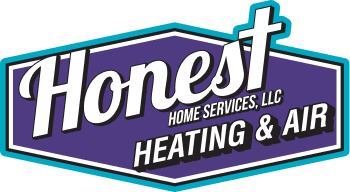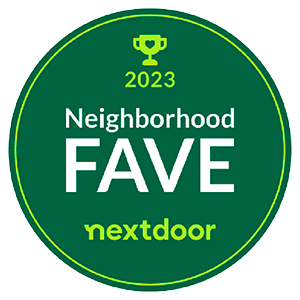Smart HVAC systems help reduce energy consumption and protect the environment while also improving comfort and convenience. The future of smart home HVAC technology seems bright with even more groundbreaking advances promised by developments in AI, machine learning, and the IoT.
The Current State of Smart Home HVAC Technology
Modern smart HVAC systems come with a plethora of high-tech features that can make your life easier and more efficient. A smart thermostat is essential because it enables programming and remote control via voice assistants and smartphones. By analyzing user behavior and adjusting heating and cooling schedules based on that data, these devices maximize comfort while reducing energy use. To top it all off, many modern HVAC systems include sensors that check the relative humidity and air quality within the building, so they can automatically change the settings to keep everyone healthy.
Understanding the Role of AI and Machine Learning
Smart home HVAC systems are undergoing a revolution thanks to artificial intelligence and machine learning, which allow them to learn from human behavior and ambient circumstances. By analyzing data from various sensors, these systems can forecast future heating and cooling demands, allowing for energy optimization without sacrificing comfort. For example, AI may use weather predictions to anticipate weather changes and modify settings proactively.
IoT Integration in HVAC Systems
Home environments are becoming more networked and responsive with the inclusion of the Internet of Things (IoT) in HVAC systems. The IoT enables gadgets to talk to one another and central control units, facilitating the smooth operation of different household systems. One example is the integration of smart HVAC, lighting, and security systems to maximize efficiency and security.
Energy Efficiency Advancements
Energy efficiency and maximum comfort are the hallmarks of today’s HVAC systems. Compressors and fans with variable speeds are examples of significant innovation. With variable-speed technology, the HVAC system can adapt its output to meet the home’s current demands, unlike older systems that only work at one pace.
Advanced Climate Control
For the ultimate experience in interior comfort, modern climate control systems provide fine-grained regulation of room temperature. Zoning systems, for example, allow for the autonomous heating and cooling of separate regions within a residence. In bigger houses, where the temperature requirements of individual rooms could fluctuate, this feature becomes even more useful.
Improved Air Quality Monitoring
When it comes to your health and comfort at home, indoor air quality (IAQ) is paramount. These days, HVAC systems can keep tabs on things like humidity, allergens, and pollutants in your home with the help of high-tech air quality sensors. They even have HVAC systems that can respond to dangerous pollutants like carbon monoxide, particulate matter, and volatile organic compounds by boosting ventilation or turning on air purifiers. You can even address particular air quality concerns, including mold or dust, using the configurable settings on advanced smart HVAC systems.
Enhanced filtration systems are also critical for improving IAQ. This is why it’s becoming more common for smart HVAC systems to include UV light purifiers and high-efficiency particulate air (HEPA) filters to remove airborne pollutants. UV light purifiers work by exposing airborne microbes like mold spores, viruses, and bacteria to ultraviolet light, which then kills them. HEPA filters are thick, capturing a large amount of airborne particles, such as pollen, dust, pet dander, and other allergens. This improves the air quality within the house by lowering the concentration of these pollutants.
Renewable Energy Integration
A rising trend that has environmental and economic advantages is the integration of renewable energy sources into HVAC systems. For example, heating and cooling systems that run on solar energy are becoming more common. Rooftop photovoltaic panels can collect sunlight, transform it into electricity, and operate the HVAC system. As a result, you use less power from the grid, thereby reducing your electricity costs.
Another renewable energy option that is becoming more popular is geothermal heat pumps. These systems make effective use of the consistent subsurface temperatures for heating and cooling. Compared to conventional HVAC systems, geothermal systems consume much less energy and produce far fewer greenhouse gases because they rely on the earth’s inherent thermal energy.
Voice and App Control
Voice and smartphone control features in HVAC systems have completely changed the way homeowners interact with their systems. Virtual assistants such as Siri, Google Home, and Amazon Alexa make it possible to manage smart HVAC systems simply by speaking to them. Users can alter settings, get system updates, and modify temperatures without physically touching the thermostat with a hands-free remote, which is convenient and accessible.
The use of mobile applications adds yet another level of convenience and control. This includes the ability to change settings, schedule maintenance, and get performance warnings. These applications often provide energy use information and tips to help users make better choices regarding their home’s temperature management.
Smart Thermostats
At the core of contemporary HVAC systems are smart thermostats, which provide cutting-edge features that improve energy efficiency and make the system more user-friendly. These gadgets pick up on the routines and preferences of the home and alter the temperature accordingly. Using geofencing technology, some smart thermostats can tell when people are getting close to or far from the house and can alter the temperature accordingly in real time to make everyone more comfortable and save energy.
Remote Diagnostics and Maintenance
A huge step forward in HVAC technology is the ability to do diagnosis and maintenance remotely. These capabilities allow HVAC technicians to remotely execute maintenance activities, diagnose problems, and watch system performance in real time. This makes it possible to resolve issues more quickly and with less need for on-site visits.
The Future of HVAC System Design
More compact, efficient, and eco-friendly HVAC systems are the future of the industry. New materials and production methods allow for longer-lasting, more efficient, and lighter parts. Thanks to these innovations, HVAC systems will be able to respond and adapt even better, allowing for more individualized comfort with less energy consumption.
Challenges and Solutions
There are still certain problems with smart HVAC systems despite all the advantages. Upgrading to a smart HVAC system may be expensive, which is a big hurdle. Governments and manufacturers are responding to this problem by expanding access to these systems through various funding and incentive programs.
Connecting smart HVAC systems to preexisting house infrastructure is another obstacle. Retrofitting may be necessary, but requires expert installation and can be both expensive and inconvenient. In response, innovations in wireless technology and plug-and-play systems are facilitating the integration and installation of smart HVAC components with little to no alteration required.
Consumer Adoption and Future Market Trends
Smart HVAC systems are becoming more popular as consumers become more aware of the need to reduce their energy consumption and environmental impact. When purchasing smart HVAC systems, consumers should consider the ease, cost savings, and improved comfort they provide. Homeowners will better understand the value of these systems, which should increase adoption rates.
Honest Home Services LLC is your go-to expert for HVAC services in Flower Mound, TX, including AC maintenance, heating repair, air quality testing, ventilation, heat pump solutions, and much more. If you’re considering upgrading to a more energy-efficient HVAC system, give us a call now.





